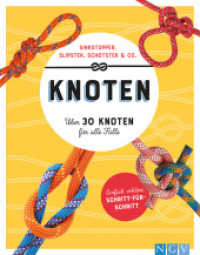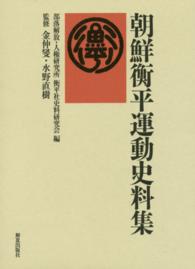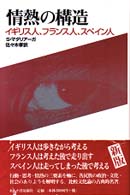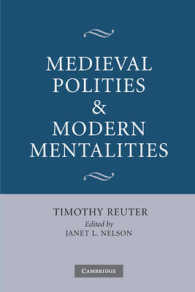- ホーム
- > 洋書
- > 英文書
- > Philosophy
Full Description
Inspired by the ecosophical writings of Felix Guattari, this book explores the many ways that aesthetics - in the forms of visual art, film, sculpture, painting, literature, and the screenplay - can act as catalysts, allowing us to see the world differently, beyond traditional modes of representation. This is in direct parallel to Guattari's own attempt to break down the 19th century Kantian dialectic between man, art, and world, in favour of a non-hierarchical, transversal approach, to produce a more ethical and ecologically sensitive world view.
Each chapter author analyses artworks which critique capitalism's industrial devastation of the environment, while at the same time offering affirmative, imaginative futures suggested by art. Including contributions from philosophers, film theorists and artists, this book asks: How can we interact with the world in a non-dominant and non-destructive way? How can art catalyze new ethical relations with non-human entities and the environment? And, crucially, what part can philosophy play in rethinking these structures of interaction?
Contents
Introduction
Colin Gardner (University of California, Santa Barbara, USA) and Patricia MacCormack (Anglia Ruskin University, UK)
PART 1: Therapy/Care/Affect/Poetics: Towards and Ecosophical Ethics
Chapter 1. Schizosemiotic Apprenticeship: Guattari's Gift to Contemporary Clinical Practice.
James Fowler and Patricia MacCormack (Anglia Ruskin University, UK)
Chapter 2. 'An inside that lies deeper than any internal world': On the Ecosophical Significance of Affect
Jason Cullen (University of Queensland, Australia)
Chapter 3. Care of the Wild: A Primer
Aranye Fradenburg (University of California, Santa Barbara, USA)
Chapter 4. Audubon in Bondage: Extinct Botanicals and Invasive Species.
Penelope Gottlieb (University of California, Santa Barbara, USA)
Chapter 5. From 'Shipwreck of the Singular' to Post-Media Poetics: Pierre Joris's Meditations on the Stations of Mansur Al-Hallaj as processual praxis
Jason Skeet (Cardiff University, UK)
PART 2: Ecosophical Aesthetics, 'UIQOSOPHY' and the Abstract Machine
Chapter 6. UIQOSOPHY (or an Unmaking-of)
Graeme Thomson and Silvia Maglioni (independent artists and filmmakers)
Chapter 7. The Guattarian Art of Failure: An Ecosophical Portrait
Zach Horton (University of California, Santa Barbara, USA)
Chapter 8. Into the Zone: Affective Counterpoint and Ecosophical Aesthetics in the Films of Terrence Malick
Colin Gardner (University of California, Santa Barbara, USA)
Chapter 9. The Delirious Abstract Machines of Jean Tinguely
Joff Bradley (Teikyo University, Japan)
PART 3: The Shattered Muse: Ecosophy and Transverse Subjectivities
Chapter 10. The Shattered Muse: Mêtis, Melismatics & The Catastrosophical Imagination
Charlie Blake (University of Brighton, UK)
Chapter 11. The Transversalization of Wildness: Queer Desires and Nonhuman Becomings in Djuna Barnes's Nightwood
Alexandra Magearu (University of California, Santa Barbara, USA)
Chapter 12. Doing Something Close to Nothing: Marina Abramovic's 'War Machine!'
Renee C. Hoogland (Wayne State University, USA)
Index








